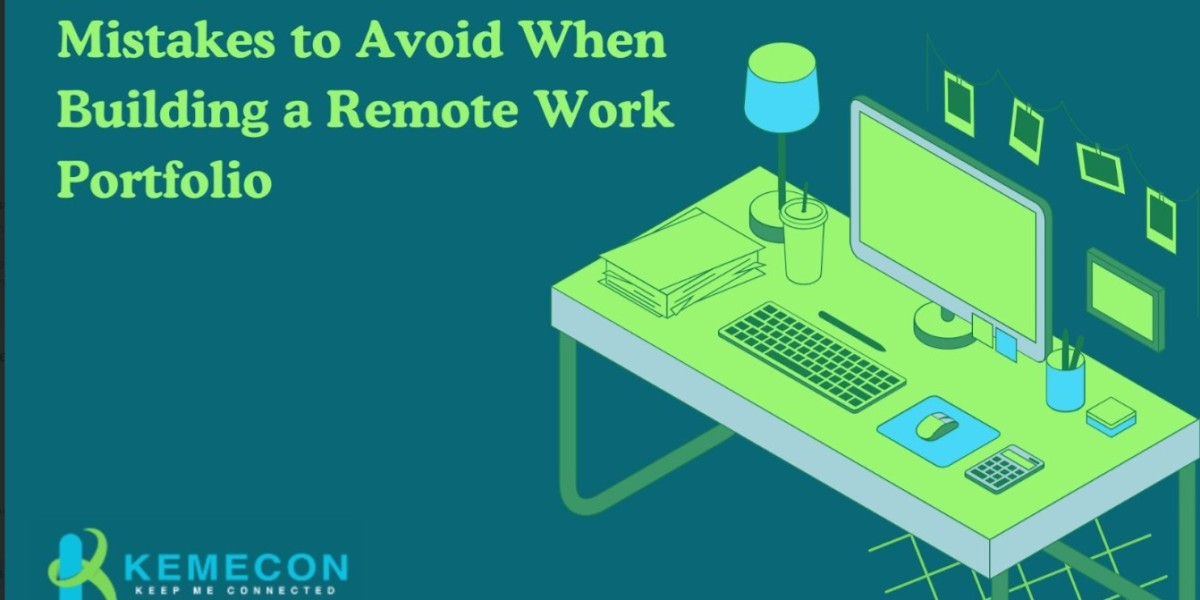In today's digital world, having a strong remote work portfolio is essential to attract clients and employers. A well-crafted portfolio showcases your skills, experience, and professionalism. However, many people make common mistakes that can hurt their chances of landing remote jobs. If you want to create a winning portfolio, here are some mistakes to avoid.
1. Not Having a Portfolio at All
Many freelancers and remote workers believe that a resume alone is enough. However, clients and employers want proof of your skills. A portfolio helps you stand out by providing real examples of your work. If you don't have a portfolio, you may miss out on great opportunities.
2. Including Too Much Information
A portfolio should highlight your best work, not list everything you've ever done. A cluttered portfolio can overwhelm potential employers. Instead, select your top projects that showcase your expertise and relevant skills. Quality is always better than quantity.
3. Lack of Organization
Your portfolio should be easy to navigate. If it is messy and unstructured, visitors may leave before seeing your best work. Organize your portfolio into clear sections such as:
- About Me
- Skills
- Work Samples
- Testimonials
- Contact Information
A well-structured portfolio makes a good first impression and keeps clients engaged.
4. Not Showcasing Relevant Work
Your portfolio should be tailored to your target audience. If you are applying for a remote writing job, showcasing logo designs won't help. Make sure the projects in your portfolio match the type of work you want to do.
5. Ignoring Visual Appeal
A poorly designed portfolio can drive potential clients away. Even if your work is great, an unappealing layout or difficult navigation can make it hard for clients to focus. Use a clean, professional design that highlights your work in the best way possible.
6. Not Including Testimonials or Reviews
Testimonials from past clients add credibility to your portfolio. They show potential employers that others have trusted you and were satisfied with your work. If you have worked with clients before, ask them for short reviews and add them to your portfolio.
7. Failing to Explain Your Work
Simply uploading images or links is not enough. Explain each project briefly:
- What was the goal of the project?
- What challenges did you face?
- How did you solve them?
- What was the result?
Providing context helps clients understand your skills and thought process.
8. Not Keeping Your Portfolio Updated
An outdated portfolio can make you look inactive. If your last project was from three years ago, clients may wonder if you are still working in the field. Regularly update your portfolio with fresh projects, new skills, and recent testimonials.
9. Using Low-Quality Images or Screenshots
If you use blurry or low-resolution images in your portfolio, it can make your work look unprofessional. Always upload high-quality images that accurately represent your skills and expertise.
10. Not Making It Mobile-Friendly
Many clients view portfolios on their mobile devices. If your portfolio is not mobile-friendly, it may not display correctly, causing you to lose potential opportunities. Make sure your portfolio website or document is responsive and easy to view on all devices.
11. Skipping a Personal Touch
Your portfolio should reflect who you are as a professional. Including a short bio, a professional photo, and a personal touch can make a strong impression. Clients want to connect with real people, not just work samples.
12. No Clear Call to Action
What do you want visitors to do after viewing your portfolio? If you don't provide a clear next step, they may leave without contacting you. Add a Call to Action (CTA) such as:
- "Contact me for collaboration."
- "Hire me for your next project."
- "Download my resume."
Make it easy for potential clients to reach out.
13. Forgetting Contact Information
Your portfolio should always include ways to reach you. Some freelancers forget to add their email, phone number, or links to their LinkedIn profile. Without clear contact details, clients cannot hire you, even if they like your work.
14. Overloading with Technical Jargon
While it's important to sound professional, using too much technical language can confuse potential clients. Keep your descriptions simple, clear, and easy to understand, especially if your target audience is not familiar with industry-specific terms.
15. Not Highlighting Your Unique Selling Point
What makes you different from other remote workers? Whether it's your experience, unique skills, or work style, highlight what sets you apart. A strong Unique Selling Point (USP) makes your portfolio more memorable.
Conclusion
Creating a remote work portfolio is essential for showcasing your skills and attracting potential clients. However, making common mistakes can reduce your chances of getting hired. Avoid these pitfalls by keeping your portfolio well-organized, updated, and visually appealing. Highlight your best work, include testimonials, and make sure it's easy to navigate. By doing so, you will increase your chances of landing remote work opportunities and growing your career successfully.
Originally Article Published at:- t.ly/gBNlT










